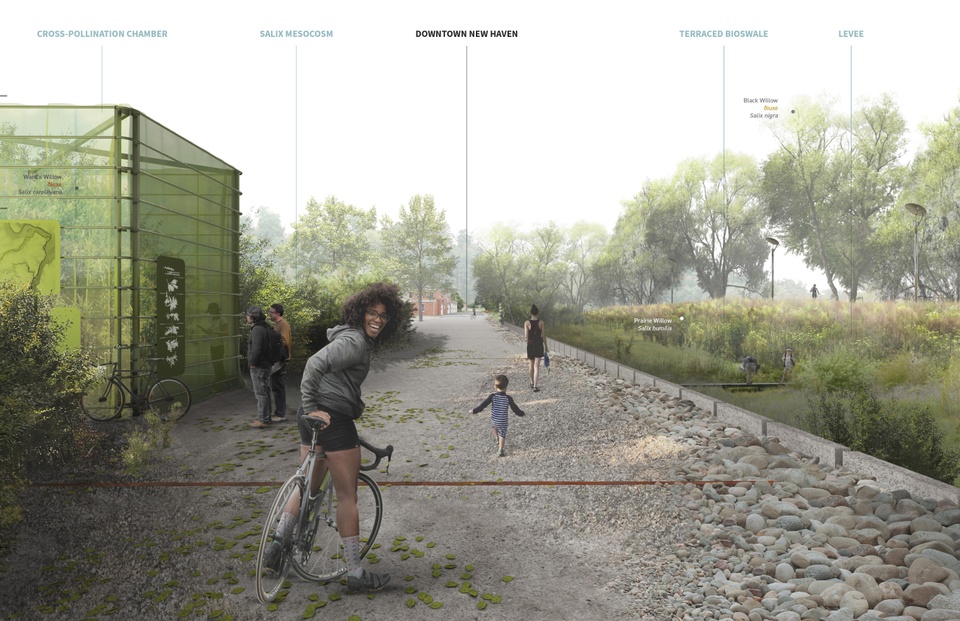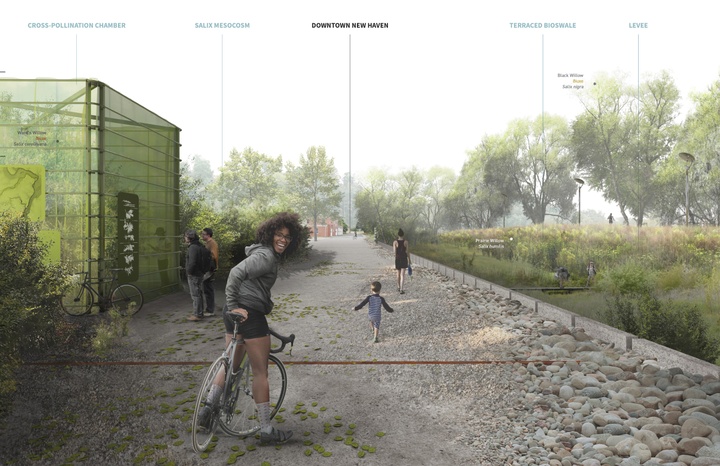MLA Curriculum
Graduates of the Master of Landscape Architecture program earn an accredited, professional degree, allowing them to become registered landscape architects. All MLA programs are STEM-designated.
- The MLA 3 program is a 6-semester course of study totaling 90 credits.
- The MLA 2 program is a 4-semester course of study totaling 60 credits.
Program Placement: MLA 3 vs. MLA 2
This program welcomes applicants holding a baccalaureate degree in landscape architecture or in any major. The immersive three-year Master of Landscape Architecture (MLA) provides a degree that enables graduates to enter the profession of landscape architecture and be eligible to pursue licensure.
MLA 2 Placement
Applicants with a background in architecture or landscape architecture are considered for advanced placement based on design portfolio evaluation and the extent of their previous relevant studies. Advanced placement leads to a two-year course of study for qualified applicants.
Credits may not be transferred from another institution into either the MLA 2 or MLA 3 Program. Potential candidates must apply directly as first-year graduate students.
MLA 3 Program Requirements
This three-year program provides opportunities for study abroad and internships in the summer. Students with no prior experience in design are eligible to enroll in the program and graduate with a degree that enables them to enter the profession of landscape architecture and become registered professionals. Note: Students must take two ecological electives during the program; general electives must be taken at the 300-level or higher.
General program requirements for students entering in fall 2022 or later are featured below. Full details related to studio requirements and prerequisites can be found in the pdf documents.
MLA 2 Program Requirements
Students who have prior degrees in architecture or landscape architecture are eligible for this accelerated track. This is typically a two-year course of study that provides flexibility for students whose undergraduate studies have prepared them in different ways for graduate study in landscape architecture. Note: Students must take two ecological electives during the program; general electives must be taken at the 300-level or higher.
General program requirements for students entering in fall 2022 or later are featured below. Full details related to studio requirements and prerequisites can be found in the pdf documents.
Core Studios Overview
401: Studio I
First core studio of the MLA 3 program
Students are introduced to landscape architectural design focusing on conceptual, perceptual, and tectonic themes with a community-engaged site in St. Louis.
402: Studio II
Second core studio of the MLA 3 program
Areas of focus include spatial understanding, ground plane manipulation, and vegetation and material strategies in a St. Louis neighborhood.
501: Studio III
Third core studio of the MLA 3 program; first core studio of the MLA 2 program
Students are introduced to larger-scale systems, focusing on site reclamation strategies rooted in ecological, social, infrastructural, and cultural issues, culminating in the generation of multi-scale design propositions, with particular focus on watershed-based design strategies.
502: Studio IV
Fourth core studio of the MLA 3 program; second core studio of the MLA 2 program
Students are challenged to recalibrate large-scale site systems to balance inherent resources with development by means of innovative programming at the site-scale in complex urban and regional contexts.
601: Studio V
Comprehensive landscape architecture studio/self-directed studio
Students engage various aspects of the professional practice of landscape architecture, collaborating with multiple voices in the discipline to better transform previously mismanaged sites into future-forward resilient landscapes.
602: Studio VI
Comprehensive landscape architecture studio/self-directed studio
The final semester ranges in scale and scope from experimental speculations to pragmatic proposals, with the goal of students developing their own positions before entering the discipline of landscape architecture.

